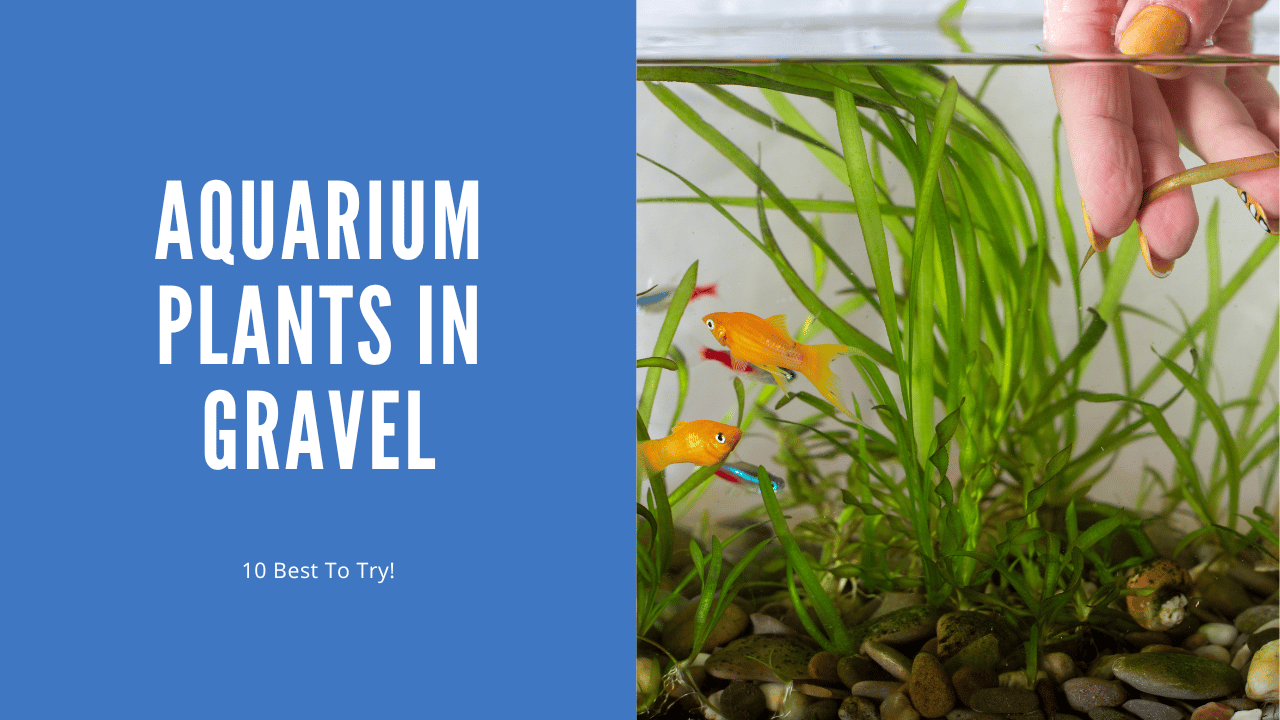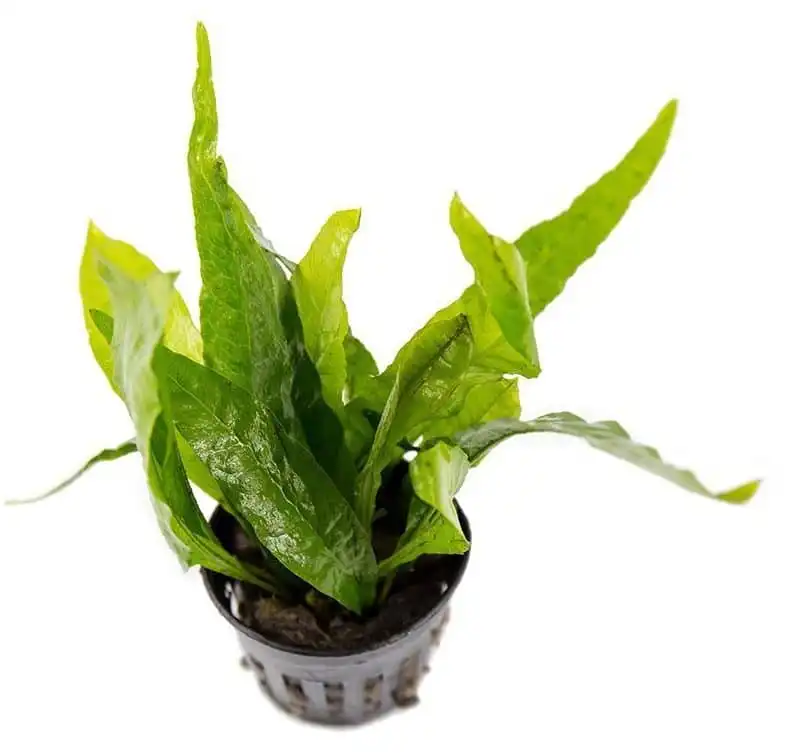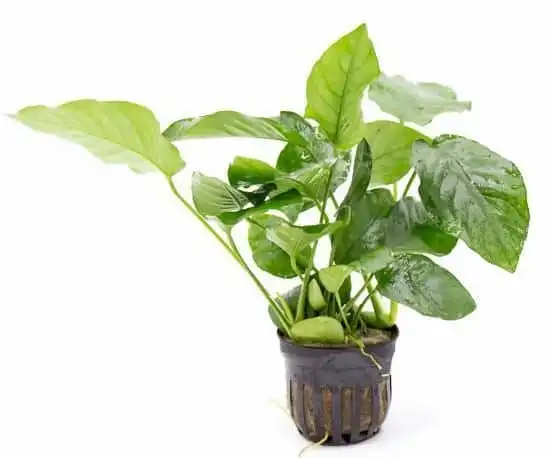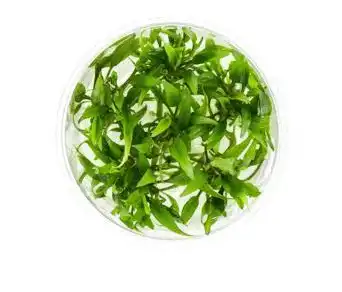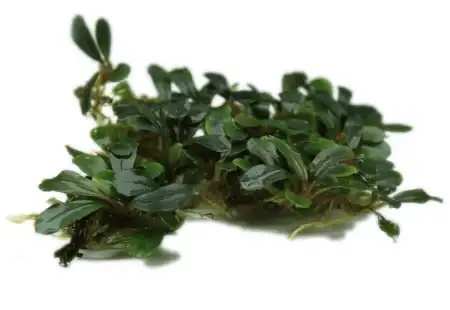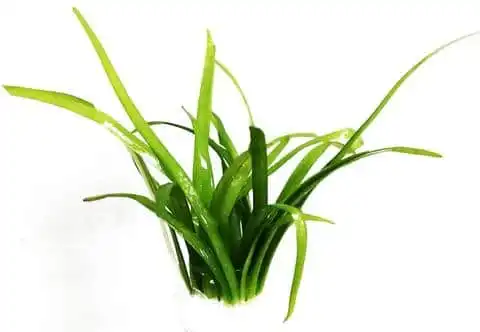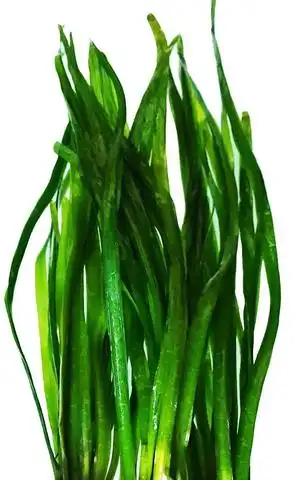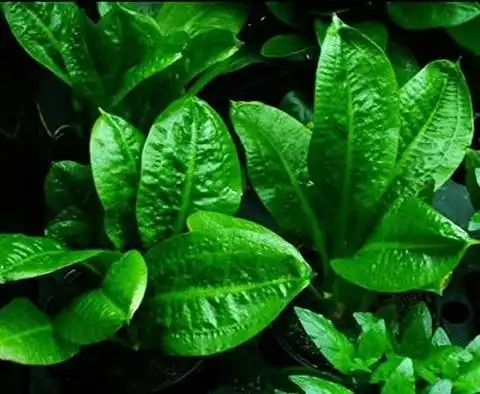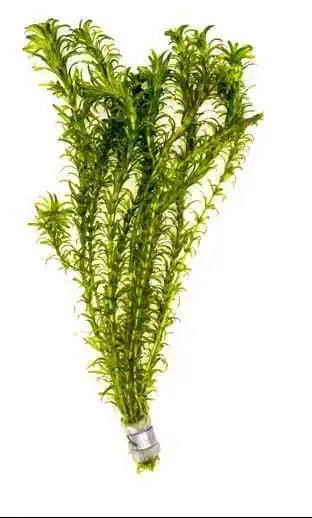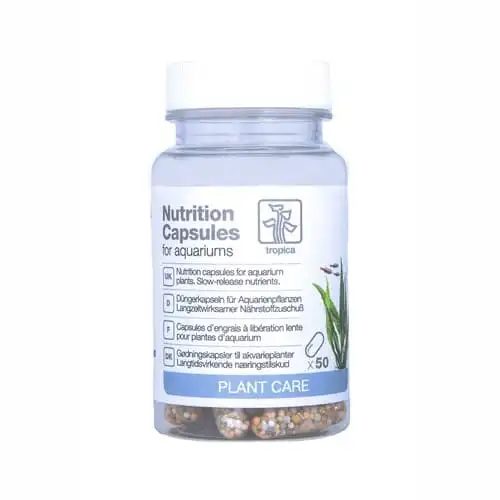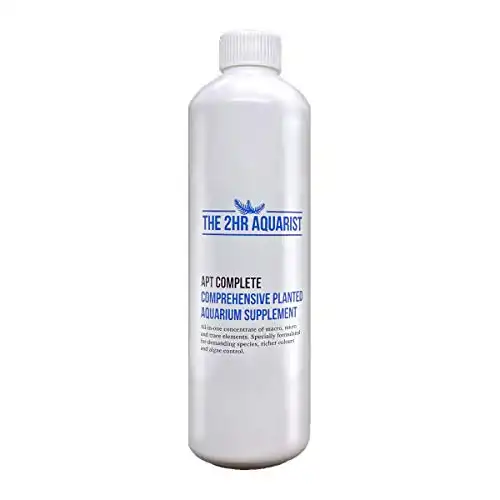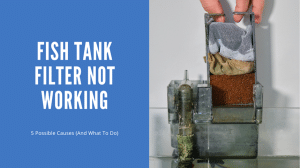Thank you for visiting! By the way… any links on this page that lead to products on Amazon and other stores/partners are affiliate links Aquarium Store Depot earns a commission if you make a purchase.
Growing plants in gravel substrate is tricky but if done correctly, this can give your aquarium a whole new level of beauty. Not only that, but you can also enjoy something new and interesting without any hurdles in the way.
Not all plants can grow in gravel, and that’s why it’s essential to know what plant species can flourish in gravel substrate exactly how you want.
In this article, I will go over 10 different plant species that are ideal to grow in gravel substrate. You can learn about the specific requirements of gravel plants, their ideal tank conditions, and how to provide the required nutrients to the plants for optimum growth.
Key Takeaways
- The best aquarium plants in gravel are going to be plants that feed on the water column
- You can use rooted plants if you use root tabs as fertilizer
- Most plants that can grow in gravel are going to very hardy and easy to grow
Is Growing Plants In Gravel Worth It?
Growing plants in gravel can be a new experience for many aquarists. It requires time and dedication to see your efforts finally yield great results.
As long as you stick to the proper guideline for maintaining plants in gravel, you will never come across any issues.
Plants need proper maintenance to grow. This can include fertilization, proper lighting, CO2, and your choice of substrate. We will discuss that in detail later on.
10 Best Aquarium Plants For Gravel Substrate
It doesn’t matter whether you are a beginner or someone with extensive aquarium knowledge, you can make mistakes when it comes to picking plant species for gravel.
Apart from knowing what plants are best, you need to know other important information to avoid any mishaps.
Including different plant varieties, I’ll cover these stats so can you go ahead and buy whatever plant species you like.
- Scientific Name
- Skill Level
- Size
- Lighting
- pH
- Growth Rate
- CO2 Requirement
1. Java Fern
Java Fern is one of the easiest and hardiest live plants you can purchase
- Scientific Name: Microsorum pteropus
- Skill Level: Easy
- Size: 10 to 12 inches
- Lighting: Low to moderate, 40-125 PAR (Umols)
- pH: 6.0 – 8.0
- Growth Rate: Slow
- CO2 Requirement: No
Java Fern is a great option for beginners because of its low maintenance and high environmental adaptability quality.
Depending on the species, these aquatic plants can vary in shape and size. You will usually see these plants taking on colors like a deep brown color with dark green roots.
Java Fern requires low levels of fertilizers, making it one of the best aquarium plants to grow in gravel. You can keep these plants in low light with a temperature ranging from 64 F° to 82 F°.
While placing the plant, make sure you don’t put the plant roots too deep in the substrate since this can kill the plant. Like other plants that need nutrients to grow, Java Fern also needs a small amount of nutrients produced from fish waste to grow. Apart from this, you can consider good quality supplements to support their growth and lifespan.
Propagation
Propagating Java Fern is pretty easy. The first step is to carefully cut off plantlets with sterile scissors. After that, attach the fresh rhizomes to the surface and leave them for a few weeks.
2. Anubias
Best Value
This hardy plant is super versatile. Can be placed anywhere in the aquarium and looks amazing when aquascaped
- Scientific Name: Anubias Barteri Var. Nana
- Skill Level: Easy
- Size: 6 inches
- Lighting: Low to moderate, 50-125 PAR (Umols)
- pH: 6.0 – 7.5
- Growth Rate: Slow
- CO2 Requirement: No
Anubias Nana is a highly popular aquarium plant ideal for almost every planted aquarium. Aside from being a pretty easy plant to care for, Anubias Nana is one of the most beautiful aquarium plants used for freshwater aquariums.
This plant grows from a thick and horizontal rhizome and has a moderate growth rate. These aquatic plants take on darker shades of green and have rounded and compact leaves designed horizontally.
The best thing about Anubias Nana is that these plants can develop flowers completely submerged in water. And as far as lighting condition goes, you can keep these plants in low to moderate to high lighting completely risk-free.
When it comes to placing, avoid covering its thick rhizome with aquarium gravel. You can place plant roots in the substrate though. This hardy plant is also a pretty versatile plant that can grow fairly well without too many liquid fertilizers. The water temperature should be between 72 F° to 82 F°.
Propagation
To propagate Anubias, cut the rhizome of the mother plant. Use a sharp blade and cut the rhizome into 2 or more pieces with care. Make sure there are at least 4 leaves on each section of the rhizome.
3. Cryptocoryne Wendtii
A great low tech plant for multiple aquascape types and setups. Forgiving and hardy, the Cyrptocoryne Wendtii is a great introduction to rooted plants!
- Scientific Name: Cryptocoryne wendtii
- Skill Level: Easy
- Size: 4 to 14 inches
- Lighting: Low, 50-200 PAR (Umols)
- pH: 6.8 – 7.2
- Growth Rate: Slow to moderate
- CO2 Requirement: No
Cryptocoryne Wendtii is another great choice for a planted tank. The plant is attractive and has simple needs that you can easily fulfill by following the right guide.
Like Java Fern, this aquatic plant can also have different sizes and shapes based on its variety and tank conditions.
Typically, the leaves have a compressed texture to an undulating appearance with a huge variety of colors. Apart from deep green to dark brown shades, you can see the leaves of a Cryptocoryne Wendtii featuring golden, bright yellow, white, and moderate red shades. This allows you to diversify your taste and not curtail yourself to only green plants.
When placing the plant, you can expose it to bright lighting for better growth. Even though these plants already have a large and strong system of roots, you won’t see them above the substrate level.
Cryptocoryne Wendtii feeds through their roots, making it essential to place them in a nutrient rich substrate. These plants can grow in gravel substrate they also do well in sand substrate.
Since the plants grow a large root system, you have to root them down as early as possible in a 3 inches-deep gravel.
Propagation
There are different ways to propagate this plant. You can start by cutting off the root with a stem and then plant it into the substrate.
You can also split apart the larger plant into clumps of plantlets. After that, replant them a few inches apart to support proper growth.
Cryptocoryne Wendtii can also reproduce through runners. The young plants growing from runners often appear separated from the main plant which makes it easy to remove and replant them.
4. Bucephalandra
Bucephalandra is a slow-growing plant that's perfect for anyone looking to grow their first aquatic plant. They are great for attaching to hardscape
- Scientific Name: Bucephalandra
- Skill Level: Moderate
- Size: 1 to 10 inches
- Lighting: Low, 40 PAR (Umols)
- pH: 6.0 – 8.0
- Growth Rate: Slow
- CO2 Requirement: No, but recommended
Despite being new to the aquarium hobby, Bucephalandra has become a highly recognized plant because of its unique colors, and straightforward requirements for growing in a home aquarium.
The plant features different sets of colors, ranging from dark green to a whole spectrum of shades. The upper parts of the plants look slightly glossy with under-parts of the leaves painted in bright red, white, or yellow colors.
This plant does well when given a good nutrient supply. Although water parameters have to be according to what they prefer to thrive, make sure the temperature stays between 71 F° to 79 F°.
While placing, cover the roots of the plant with gravel but make sure you don’t plant them in the aquarium substrate.
Apart from other advantages of planting them, Bucy Plants give a wide surface for shrimp shade to small fish species.
Propagation
To propagate Bucephalandra, cut off the rhizome into multiple little plants like Anubias. Use scissors to successfully get it done without harming the plant. The individual rhizomes should be moderate in size, and at least 1.5 inches long.
5. Dwarf Sagittaria
A hardy and easy to grow ground cover aquarium plant. Does not need CO2 to thrive
- Scientific Name: Sagittaria subulata
- Skill Level: Easy
- Size: 4 to 12 inches
- Lighting: Moderate to high, 60-150 PAR (Umols)
- pH: 6.0 – 8.0
- Growth Rate: Moderate to fast
- CO2 Requirement: No, but recommended
Dwarf Sagittaria is another great plant to consider for growing in gravel. This aquarium plant grows beautiful little while-colored flowers and a long white root system in the substrate based on how well you take care of them.
Luckily, this plant is quite adaptable to environmental transitions and can be used both in the foreground area and middle area.
Dwarf Sagittaria does well when kept under moderate lighting. You can see scarlet hues on their leaves as a result of proper maintenance.
Like other plants, a Dwarf Sagittaria also needs nutrients in the gravel to grow and make your aquarium beautiful. Though the plant is pretty hardy, the absence of fertilizers and iron can cause the death of the plant. Also, make sure you remain between 70 F° to 82 F° while setting up water parameters.
Propagation
Dwarf Sagittaria propagates by producing runners. You can cut them off and plant them into the substrate.
6. Vallisneria
One of the easiest background placement aquarium plants that can be kept. Provides excellent shelter for fish
- Scientific Name: Vallisneria spiralis
- Skill Level: Easy
- Size: 12 to 72 inches
- Lighting: Low, 40-200 PAR (Umols)
- pH: 6.5 – 8.6
- Growth Rate: Fast
- CO2 Requirement: Optional
Vallisneria is one of those few aquarium plants that will never disappoint you.
If you already have a fish tank with different plants and looking for something new and unique, go for Vallisneria since it can blend well with other plants.
This fast-growing and undemanding plant need moderate lighting to grow and stay healthy.
If the tank conditions match their preference, you will see the plant growing fairly fast. The fresh leaves look bright green, making your tank appealing.
Since Vallisneria is a submerged plant, it spreads by runners and forms long roots underwater. The good thing about this plant is that it can withstand water shifting much more easily than most aquatic plants.
Propagation
Vallisneria propagates through producing runners.
7. Amazon Sword
A classic background aquarium plant. Grows large and will be a centerpiece in your aquarium
- Scientific Name: Echinodorus amazonicus
- Skill Level: Easy
- Size: 4 to 20 inches
- Lighting: Low, 40-250 PAR (Umols)
- pH: 6.6 – 7.5
- Growth Rate: Moderate
- CO2 Requirement: No
If you have prior aquarium experience then you know how well-recognized Amazon Sword is. With its large leaves sitting on a short stem, Amazon Sword makes a wonderful addition to planted aquariums.
The leaves comprise a pretty prominent mid-vein and secondary veins running alongside the margin.
Amazon Sword is a relatively easy plant to manage. It does well both as a background and mid-ground plant in planted aquariums.
While placing Amazon Sword in planted tanks, don’t forget to keep gravel at least 3 inches deep. They need plenty of gravel to root and it’s better to pack the gravel moderately.
Another essential thing to know is their extensive root systems. The plant can grow on its own. Hence, avoid planting the plant roots too deep so that you don’t have to do frequent trimmings.
As far as lighting goes, exposure to bright lighting or access to low is never an issue. They can withstand different lighting conditions and a variety of water temperatures.
Propagation
Amazon Sword can be grown in two ways. One is through developing small blossoms, and the other is through producing runners.
8. Anacharis
Excellent as a food source and sucks up nutrients in an aquarium. One of the easiest freshwater plants to care for
- Scientific Name: Egeria densa
- Skill Level: Easy
- Size: 6 to 8 inches
- Lighting: Moderate to high, 100-250 PAR (Umols)
- pH: 7.0 – 8.0
- Growth Rate: Fast
- CO2 Requirement: No
Anacharis is a large aquarium plant that can grow fairly well in gravel. Aquarium plants that grow up to 6 feet can be slightly demanding to place, but consider the benefits this specific plant can bring to your home aquarium.
These plants feature extensive green stems and grow in the substrate as well as floating plants.
When you observe the pattern of the leaves, you see them arranged compactly like a coil.
You have to make water parameters consistent with Anacharis since these plants grow a beautiful deep green color when kept in an ideal environment. Plants that are kept in different conditions might look light green in appearance.
When it comes to the root system, Anacharis have two different types of roots which are white. Both roots can grow from the stem and then into the substrate. The longer stems grow into the water but these stems don’t grow from the bottom of the stem. Rather, they project along the stem.
Longer stems can absorb nutrients from the water column, and make these plants a pretty fast species to grow.
Including gauging the right water parameters, you have to keep these plants in moderate lighting so that this fast-growing plant can take on a deep green shade.
Propagation
To propagate Anacharis, cut the stems that are at least 5 inches long and then insert them into the substrate.
9. Dwarf Hairgrass
Dwarf hairgrass is an easy to grow carpet that is great for beginners. Purchase tissue culture plants to ensure pest free plants!
- Scientific Name: Eleocharis acicularis
- Skill Level: Easy
- Size: 6 inches
- Lighting: Low, 35-50 PAR (Umols)
- pH: 6.5 – 7.5
- Growth Rate: Fast
- CO2 Requirement: Yes
Dwarf Hairgrass is not a new plant in the aquarium hobby. With its striking green color and beautifully shaped leaves, this plant is irresistible.
Since you’re looking for plants that grow in gravel, compromising on the appearance of the bottom is not possible. And that’s why I added this species to the list. Dwarf Hairgrass gives a soft and lush green texture to the foot of the bottom. This carpeting plant has lightly twisted leaves with blades that make it more appealing.
Like Anacharis, Dwarf Hairgrass has to be kept in proper water conditions so that it can grow to the fullest. Water conditions will also determine whether or not your plant will produce white roots. Even though these roots stay hidden in the substrate, the plant will grow to the glass of the tank and will look incredible.
You can use these plants to create a thick lawn in your aquarium. When planted properly, these plants tend to spread widely by runners.
Lighting is another contributing factor in their proper growth. In their natural habitat, Dwarf Hairgrass grows in moderate natural lighting. You will only get a beautiful carpet once you get a stronger lighting setup. Also, the intensity of light should be in consideration since this is a slow-growing plant. For the substrate, gravel or sand is not an issue, but it’s better to get something finer. Normal gravel will also do but sand is ideal for the frail roots of the plant.
Propagation
Propagating Dwarf Hairgrass is also pretty easy. Just grab the roots using tweezers and make small clumps. Place each gently into the substrate an inch apart.
10. Christmas Moss
A easy to care ground cover plant that is an excellent choice for shrimp tanks
- Scientific Name: Vesicularia montagnei
- Skill Level: Easy
- Size: 4 inches
- Lighting:
- pH: 5.0 – 7.5
- Growth Rate: Moderate
- CO2 Requirement: Yes
The last plant on this list is Christmas Moss which is beginner-friendly and is used around the world by beginners, intermediate-level aquarists, and fish keepers who are fairly experienced.
Christmas Moss grows slowly, but it can create a magnificent carpet across your aquarium. With its long and dangling branches that overlap each other, the plant resembles a Christmas tree.
Unlike other aquarium mosses, Christmas Moss is the most beautiful moss you will ever see. It’s hardy and can grow in aquariums if you keep water parameters and the overall aquarium environment matching its natural habitat.
When placing it, don’t let the plant get covered with any shade since it grows well only when there’s enough light.
The plant can grow with or without CO2, but using liquid fertilizer is highly recommended.
Propagation
To propagate Christmas Moss, take the parent plant and cut it into small pieces. After the division, simply attach the new pieces to the new site.
How To Grow Plants In Gravel Substrate
Growing and keeping aquarium plants in gravel need a little bit of proper guidance, patience and focus. In this part of the article, I’m gonna show you how to successfully grow plants in gravel. So, let’s dive straight into that. If you want to see a video breaking down the subject, check out the video below from Palmer Fish Talk.
There are three routes to grow plants in gravel substrate. The first one is putting organic soil so that the plants can absorb nutrients from it. The second one is using those plants that are hardy like the ones I discussed above. And the third route is to use root tabs.
Some people don’t like to use pots in their aquariums, and they prefer using sand. Sand is a good option to consider but gravel isn’t any less either. In fact, if you use thick sand, it can prevent water flow and encourage substrate compaction.
A proper amount of water should always flow through the substrate to ensure the plant roots are getting enough oxygen and CO2. Even if you use fertilizers, it might be hard for them to get to the roots and provide nutrients to the plants.
Before you venture out and purchase gravel, make sure you get fine gravel that won’t be harsh on the roots.
Now let’s focus on the root tabs route. The root tab route is basically a pretty easy method. All you have to do is get these little gel capsules and dip them into the substrate.
Tropica Root Tabs are superior to many store brand root tabs like API. Roots tabs created for the professional aquascaper!
Root tabs are filled with nutrients that help the plants grow and survive. They are usually filled with potassium, iron, and sometimes just dirt. Plants love dirt because they get nutrients and a system of water through it. The best way to dip these capsules into gravel is to get tweezers or use your hands. Just put them below the surface but avoid going too deep.
Fertilization
For plants that grow in gravel, fertilization becomes important more than ever. Some plants can get nutrients from fish waste but sometimes that’s just not enough.
You need to get them good fertilizers to fulfill their basic demands.
Editor's Choice
Made by an aquascaper for aquascapers. This is the best all around aquarium plant fertilizer on the market. Marco and micronutrients in one bottle!
Use Coupon Code ASDComplete for 10% off your order!
Gravel can provide them with beneficial bacteria that help keep a biological balance within the tank. The plants usually absorb nutrients from the gravel while some plants access nutrients present in the water column.
Trimming
Most stem plants grow really fast. Such plants have to get frequent trimmings so that they don’t consume the whole aquarium. Also, you have to keep your plants clean and in shape which is possible by trimming them.
While cutting off bits of plants, make sure you use high-quality aqua-scaping scissors.
Tank Maintenance
Tank maintenance holds intrinsic value to the overall fitness of your plants.
There are many issues related to plants that can influence your aquarium environment. For example, if a plant melts, or there is plant material sitting at the bottom for too long, the water can become toxic for your fish. It can even kill your plants.
Apart from keeping water parameters consistent, make regular water changes and clean the tank.
Filtration And Water Quality
When you have live plants, as well as fish living in an aquarium, filtering out toxins from the water becomes extremely essential and unavoidable.
Not only a fish tank, but a planted tank also needs a quality filtration system. For a planted tank, you can go for a canister filter to weed out toxins from the tank.
Tank Mates
For a planted tank, you have to be careful while choosing what fish species the plants are going to be with.
Here are a few fish species you should avoid housing with plants in freshwater fish tanks. While you can keep plants with them it’s a challenge.
FAQs
Can Plants Grow In Rocks?
You can grow aquarium plants in gravel, given you take care of their basic needs to grow and thrive. While some plants are ideal for gravel substrate, some species can’t withstand gravel. You need to choose those species that are hardy and can absorb nutrients from the gravel.
While some plants are ideal for gravel substrate, some species can’t withstand gravel. You need to choose those species that are hardy and can absorb nutrients from the gravel.
Do They Grow Better In Sand Or Gravel?
Growing plants in the sand is common but it can hold back water flow that is necessary for the plants. Gravel doesn’t do that. But generally, both mediums are good for plants to grow. But since each has a few drawbacks when it comes to providing plants with proper nutrients, you need capsules filled with nutrients to help the plants grow properly.
Which Tank Gravel Is Best?
Choosing the right aquarium gravel is one of the best things you can do. Whatever gravel you go for, make sure it doesn’t have sharp ends or dust but access plant roots to grow.
Some plants have delicate roots that rough gravel can irritate. Also, the shape and size, and texture of the gravel should be even.
Closing Thoughts
Many people think that they can only grow plants in soil, but there are actually many plants that can thrive in gravel. These types of plants are typically water column feeders and are easy to grow. If you’re looking for a new type of plant to try growing, consider one that can prosper in gravel. Do you have any experience growing plants in gravel? Let us know in the comments below!
- About the Author
- Latest Posts
I’m thrilled that you found Aquarium Store Depot! Here you’ll find information on fish, aquariums, and all things aquatics related. I’m a hobbyist (being doing this since I was 11) and here to help other hobbyists thrive with their aquariums! I adhere to a high quality Editorial Process and Review products with real life field usage and practical analysis.

